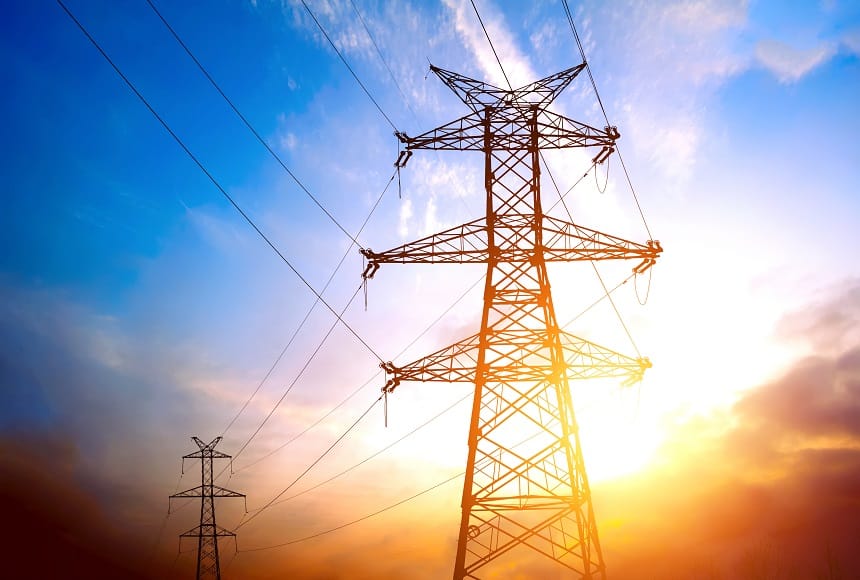To support activity in China, the world’s leading industrial power and most populous country, the transmission and distribution of electricity have become a major challenge. The geographical distance between the areas where energy resources are located and those where they are consumed has made UHV (Ultra High Voltage) technology a priority for over ten years. Today, Smart Grid technology has now also been added to this.
The enormous energy consumption associated with China’s development since the 1980s goes hand in hand with a major problem for the country: its main coal resources, the primary source of electricity generation, are located inland, several hundred kilometers from the populated coastal regions that are the main consumers.
Given this situation, one thing became clear in the early 2000s: that UHV (Ultra-High Voltage) technology, which allows electricity produced in thermal power stations installed on site to be transported rather than coal, would play a decisive role.
The UHV Project

Since the first plant opened in 2009, China has built 30 UHV lines that are operational today. They have set records in terms of power – with the 1,100 kV (kiloVolt) Zhundong-Wannan line established in 2019 – and distance – with the 3,300-kilometer Zhundong-Wannan line – to connect the major coal producing regions (namely Shanxi, Neimenggu and Xinjiang) to the most energy-intensive regions (coastal China and the surrounding areas).
The UHV project is still topical today: nine more lines are to be built by 2023, while new technologies are being tested. SGCC (State Grid Corp. of China), the grid operator that covers 26 of the country’s 31 regions (provinces or the equivalent), tested its first portions of GIL (Gas-Insulated Lines), a buried alternative to the overhead lines in densely populated areas; as well as those incorporating carbon fiber, which is potentially lighter, more conductive and stronger than metal, in 2019.
“Green” UHV
In recent years, however, China’s UHV project has evolved to accommodate a new priority: it has become the vehicle for a “green” energy policy, ensuring the development of renewable energy.
SGCC thus opened in 2019 the first UHV line (1,600 kilometers long) between the large desert province of Qinghai and Henan, responsible for conveying mainly solar electricity (with its starting point in the large photovoltaic power plant in Longyuanxia). Then, in 2020, the first large-scale wind power collection network was established, centralizing the output of 36 wind farms in Xilin Gol prefecture, in Neimenggu, to inject it into the UHV lines linking the Autonomous Region to Shandong and Jiangsu, on the coast.
CSG (China Southern Power Grid), the other major electricity distributor which manages the network of the five regions in the south-east of the country, is not to be outdone: the Kunliulong UHV line, opened in 2020, is intended to transport from Yunnan to Guangdong, China’s most populous province, over 1,450 kilometers, the production of the large hydroelectric power station of Wudongde (10,000 MegaWatt capacity), which is due to come into operation in 2021.

Distribution Modernization
However, long-distance transmission is only one of the challenges faced by SGCC and CSG. The efficient operation of the huge distribution network that takes over – with over 1.3 million kilometers of lines of 110 kV or more accumulated by the two operators – is just as essential. The goal is to modernize and improve efficiency, both in terms of reliability and savings.
This is reflected in investments in physical innovation. We can see this with the automation of inspection and maintenance processes, such as the mobile robots tested by SGCC in Shandong in 2018, or the first automated electrical substation opened by CSG in Shenzhen in 2019. Another example is in the experiments on network inspection by UAV (Unmanned Aerial Vehicles) developed by both operators.
Destination Digitalization

The most ambitious long term project, however, concerns the digitization of the network for maintenance purposes and modification management.
Here too both major national operators are committed to this approach. SGCC’s Jiangsu branch began building a “digital twin” of the province’s high-voltage network in 2020, aiming to eventually map its 90,000 kilometers of lines. For its part, CSG built the first “digital twin” of a substation in its Hainan network in 2020.
This digitialization, which is based on precision mapping using ground equipment and UAVs, is intended to eventually create a tool that will be essential for the creation of “Smart Grids.”
Objective: Smart Grids
Smart grids are of course the ultimate goal of SGCC and CSG. While the major southern operator opened a Digital Grid Research Institute in 2019 to centralize its efforts to build a “Southern Smart Grid”, SGCC has increased the number of laboratories opened, dedicated in particular to UPIOT (Ubiquitous Power Internet of Things) technologies, some of them in partnership with the great Tsinghua University.
Their objective is to anticipate the evolution of a network whose complexity is constantly increasing with the emergence of new issues – such as charging stations for electric vehicles, whose number exceeded 1.5 million in the country in 2020.
While China is still dealing with the geographical imbalance of its energy network, it is also trying to make it “green” and “smarter”, promising a sustainable initiative.
Source: E-Magazine, March 31, 2021; Updated on July 20, 2021
https://emag.directindustry.com/electricity-transmission-in-china-the-long-march-to-smart-grids-uhv/